CartujaQanat – Recovering the Street Life in a Climate Changing World Journal 2: How is Sevilla moving the needle in the fight to urban climate transformation
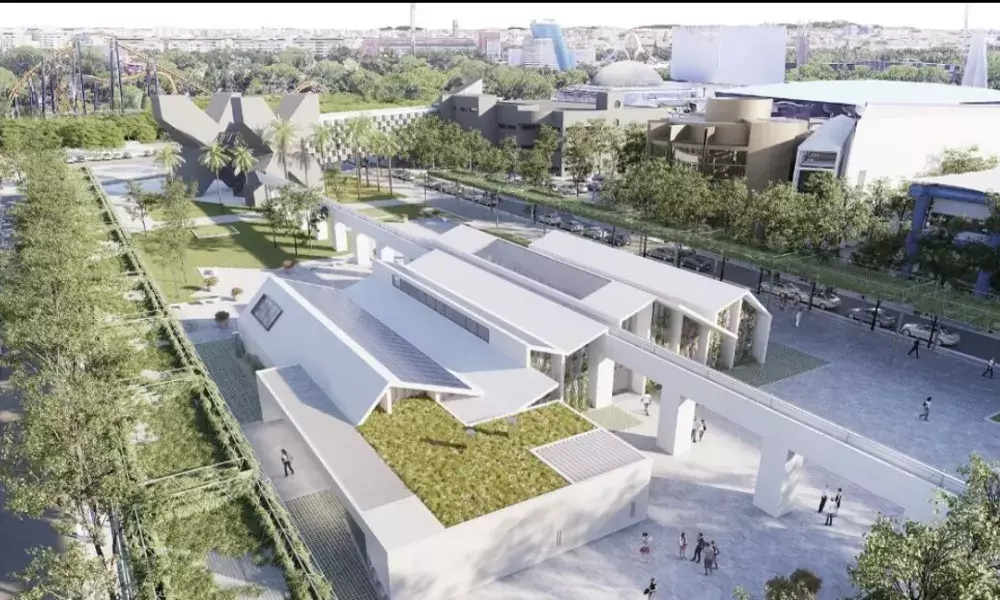
Sevilla is the hottest city in Europe expecting to record temperatures of 50 degrees Celsius for consecutive days over the next five to ten years. How does a city safeguard its public life under conditions of extreme heat? And how is cooling under such temperatures achieved with zero-net energy consumption? CartujaQanat aims to provide an answer.
Executive Summary
The CARTUJA QANAT program is about urban resilience and adaptive governance under changing climatic conditions through the recovery of an underutilized public space in Sevilla, Spain, the warmest city in continental Europe.
The Sevilla CartujaQanat program is by design, an ambitious and particularly relevant program for regions facing extreme heat phenomena and for urban authorities looking to re-develop large and unused public spaces such as Expo Spaces or old infrastructure sites adhering to the zero-energy consumption target.
The program is also looking to pioneer new management approaches for such unused public spaces to render them economically and socially viable.
It thus brings together three key areas of the European Urban Agenda: Climate change, Social Innovation and Public Space revitalisation merging under the new European Green Deal through a systems-approach and using water management as an entry point.
It is also seeking to transform the artisanal trade of ceramic-making into a 21st C technological arsenal to be used for climatic space conversions.
The project at a glance:
A pilot space containing an amphitheatre, an underground gallery and open-air facilities located on Avenida Thomas Alva Edison within the large Expo ’92 Park of Sevilla, is being reconverted into zero-energy consumption pubic space and delivered to citizens, as an innovative co-managed space for public events and leisure. Functioning as a test-bed for a diversity of solutions, the project can be transferred to streets and other large public spaces offering a new model for urban street regeneration through infrastructure, jobs re-invention and place-making.
Project Partners:
Seville City Council, Oversee the project and co-management approach co-lead
Urban Planning Management unit, Seville City Council
Emasesa, The Metropolitan Water Management Company
PCT Cartuja, The managing company of the Expo 92 Park
University of Seville, Key responsibility for the technical experiments and co-management approach
Eduardo Torroja Institute of the CSIC, Specialized in materials and engineering for construction
Innovarcilla Foundation, Focuses its activity on the industrial and artisan ceramic sectors.
The CARTUJA QANAT program is about urban resilience and adaptive governance under changing climatic conditions through the recovery of an underutilized public space in Sevilla, Spain, the warmest city in continental Europe.
The Sevilla CartujaQanat program is by design, an ambitious and particularly relevant program for regions facing extreme heat phenomena and for urban authorities looking to re-develop large and unused public spaces such as Expo Spaces or old infrastructure sites adhering to the zero-energy consumption target.
The program is also looking to pioneer new management approaches for such unused public spaces to render them economically and socially viable.
It thus brings together three key areas of the European Urban Agenda: Climate change, Social Innovation and Public Space revitalisation merging under the new European Green Deal through a systems-approach and using water management as an entry point.
It is also seeking to transform the artisanal trade of ceramic-making into a 21st C technological arsenal to be used for climatic space conversions.
The project at a glance:
A pilot space containing an amphitheatre, an underground gallery and open-air facilities located on Avenida Thomas Alva Edison within the large Expo ’92 Park of Sevilla, is being reconverted into zero-energy consumption pubic space and delivered to citizens, as an innovative co-managed space for public events and leisure. Functioning as a test-bed for a diversity of solutions, the project can be transferred to streets and other large public spaces offering a new model for urban street regeneration through infrastructure, jobs re-invention and place-making.
Project Partners:
Seville City Council, Oversee the project and co-management approach co-lead
Urban Planning Management unit, Seville City Council
Emasesa, The Metropolitan Water Management Company
PCT Cartuja, The managing company of the Expo 92 Park
University of Seville, Key responsibility for the technical experiments and co-management approach
Eduardo Torroja Institute of the CSIC, Specialized in materials and engineering for construction
Innovarcilla Foundation, Focuses its activity on the industrial and artisan ceramic sectors.
The Urban Challenges
Sevilla, located in Andalucía is the fourth largest city in Spain with a long urban history spanning from Pre-Roman times and today culminates in an original and unique amalgam of antique, roman, Arabic, Imperial Spain and modern heritage. As many cities near the Mediterranean, Sevilla has a vibrant outdoor culture, sunshine and dry heat as well as a strong tourist economy. With its port on the Guadalquivir river once the economic centre of the Spanish empire, Sevilla’s wealth is evident across the city. Home to Alcazar and other major UNESCO Global Heritage sites attractions, tourism and hospitality is the largest industry with 5 million annual visitors, generating the largest GDP of Andalucia. The port of Sevilla, is another major infrastructure asset, consisting of the larger inland port in Spain with an increasing growth in cargo shipments and large facilities for inland-sea transfer, while the Guadalquivir river itself consists of a significant biodiversity spot hosting wildlife and acting as a recreation destination.
Yet all of these interconnected systems are under risk, due to the complex intersecting urban challenges of rising urban heat, aging infrastructure and increased social vulnerability.
Sevilla, located in Andalucía is the fourth largest city in Spain with a long urban history spanning from Pre-Roman times and today culminates in an original and unique amalgam of antique, roman, Arabic, Imperial Spain and modern heritage. As many cities near the Mediterranean, Sevilla has a vibrant outdoor culture, sunshine and dry heat as well as a strong tourist economy. With its port on the Guadalquivir river once the economic centre of the Spanish empire, Sevilla’s wealth is evident across the city. Home to Alcazar and other major UNESCO Global Heritage sites attractions, tourism and hospitality is the largest industry with 5 million annual visitors, generating the largest GDP of Andalucia. The port of Sevilla, is another major infrastructure asset, consisting of the larger inland port in Spain with an increasing growth in cargo shipments and large facilities for inland-sea transfer, while the Guadalquivir river itself consists of a significant biodiversity spot hosting wildlife and acting as a recreation destination.
Yet all of these interconnected systems are under risk, due to the complex intersecting urban challenges of rising urban heat, aging infrastructure and increased social vulnerability.
Sevilla, is expected to have 50 degrees Celsius for more consecutive days over the next five to ten years. An extreme heat phenomenon means that more days overall will record temperatures above 40 degrees. Prolonged extreme heat can turn into a long-term stress leading to a sharp increase in energy demands as well as water demands for private and commercial use placing additional strain to the system of service provision and the environment. The summer of 2021 demonstrated in all severity the urgency of the challenge ahead.
Access to liveable public spaces is an urgent matter of equitable urban development. It is also a matter of public health as prolonged extreme heat can pose direct and indirect health threats to vulnerable citizens. Increasing energy demands, if they remain untreated can also cause rising energy costs, electricity disruptions and an overall system blockage with direct economic and social consequences.
Ultimately the combination of these natural risks are due to disrupt the typical outdoors living patterns and undermine social cohesion and city-life and disproportionally affecting those citizens who are more poor and vulnerable. Extreme heat not only can disrupt outdoors living but can threaten a number of current trades and economies of scale in the city.
La Cartuja, is an area centrally located in the city of Seville. Formerly an island on the river, Cartuja hosted the 1992 global expo and today it is home to over 100 country pavilions, a 15th-century monastery functioning as a contemporary art centre, several public parks and open spaces as well as university departments. Despite, however, its proximity to the centre of the city, Cartuja remains a large underused area, and with the exception of occasional open-air musical concerts it is largely unoccupied especially at night time.
CartujaQanat is a horizontal program led by the Municipality of Sevilla and EMASESA, Sevilla’s metropolitan water management company and is covering central key strategic priorities for the future outlook of the city under the Seville 2030 Strategic Plan.
It is centred around three pillars:
-
Maintaining and enhancing the Mediterranean way of living by ensuring liveable outdoor spaces
-
Identifying new technical and energy efficient ways to reduce the effects of the urban heat island in the city using water as an entry point and
-
Revitalising public spaces introducing long-term governance changes exploring new social participatory management and entrepreneurship models to tackle economic and development inequalities.
These challenges are addressed through:
-
A governance & policy experimentation dimension that aims to the identification of multiple means of citizens-involvement in public-space management. It is expanding on existing global public space management mechanisms involving social, private and public actors to offer a viable solution to the challenge of revitalising and upgrading large public spaces.
-
A technical experimentation dimension that aims to answer how to maintain public spaces cool and liveable, adhering to a zero energy consumption target offering new technical solutions for cooling down public spaces.
-
A socioeconomic dimension. The project seeks to address the socio-economical goals of increasing and diversifying job-prospects and skills around the green economy. It is addressing the challenge of job transformation by focusing on the revitalisation of traditional trades in the Spanish Ceramics industry through the reinvention of the traditional ceramic sector as a green construction material for urban heat.
La Cartuja, is an area centrally located in the city of Seville. Formerly an island on the river, Cartuja hosted the 1992 global expo and today it is home to over 100 country pavilions, a 15th-century monastery functioning as a contemporary art centre, several public parks and open spaces as well as university departments. Despite, however, its proximity to the centre of the city, Cartuja remains a large underused area, and with the exception of occasional open-air musical concerts it is largely unoccupied especially at night time.
CartujaQanat is a horizontal program led by the Municipality of Sevilla and EMASESA, Sevilla’s metropolitan water management company and is covering central key strategic priorities for the future outlook of the city under the Seville 2030 Strategic Plan.
It is centred around three pillars:
-
Maintaining and enhancing the Mediterranean way of living by ensuring liveable outdoor spaces
-
Identifying new technical and energy efficient ways to reduce the effects of the urban heat island in the city using water as an entry point and
-
Revitalising public spaces introducing long-term governance changes exploring new social participatory management and entrepreneurship models to tackle economic and development inequalities.
These challenges are addressed through:
-
A governance & policy experimentation dimension that aims to the identification of multiple means of citizens-involvement in public-space management. It is expanding on existing global public space management mechanisms involving social, private and public actors to offer a viable solution to the challenge of revitalising and upgrading large public spaces.
-
A technical experimentation dimension that aims to answer how to maintain public spaces cool and liveable, adhering to a zero energy consumption target offering new technical solutions for cooling down public spaces.
-
A socioeconomic dimension. The project seeks to address the socio-economical goals of increasing and diversifying job-prospects and skills around the green economy. It is addressing the challenge of job transformation by focusing on the revitalisation of traditional trades in the Spanish Ceramics industry through the reinvention of the traditional ceramic sector as a green construction material for urban heat.
Update about the project
Technical Innovations for developing a zero net-energy consumption public site
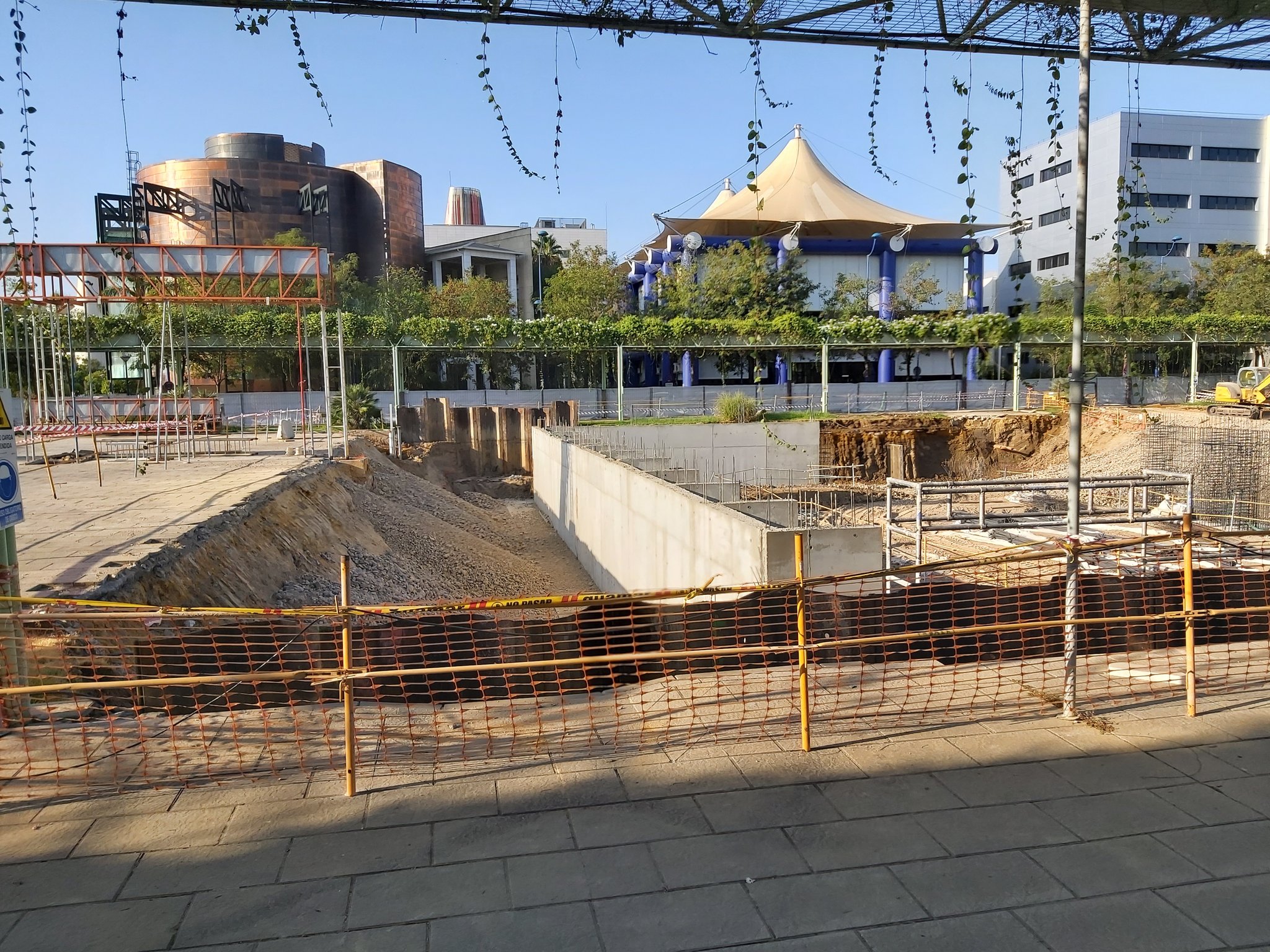
Technical Innovations for developing a zero net-energy consumption public site

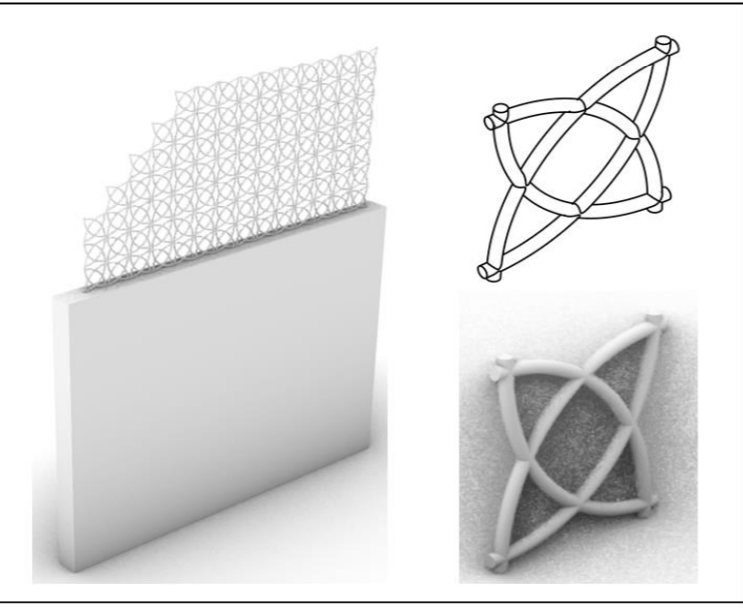
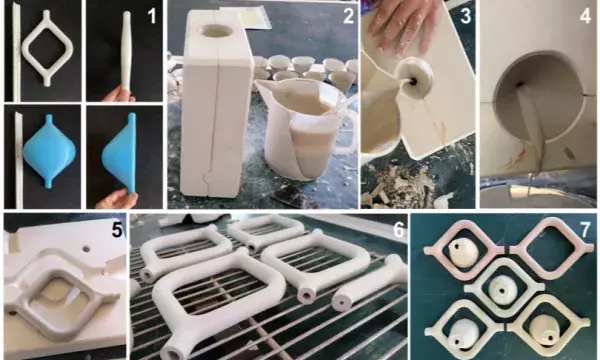
- Cooling down a public space with zero energy consumption is one of the key ambitions of the project CartujaQanat. The goal is to identify the appropriate combination of technical solutions, materials and design, that will deliver an ambient environment in open-air or closed spaces even under conditions of extreme heat using water.
- Identifying new usages for traditional material such as cement and ceramics. The use of functional ceramic products capable of retaining a large amount of water inside owing to their porous structure whose fundamental mission is to act as energy exchangers to condition the environment.
- Generation of new multifunctional concrete and ceramic products.
Challenge: Re-develop and revitalise a selected public site as a liveable zero-net energy consumption space even in conditions of extreme heat,
Tested Solution: A specific area within the Expo ’92 space has been selected as a test-bed. The space regeneration will be based on the renovation of the existing elements within the space: fountain, aqueduct and amphitheatre, through the use of innovative systems that will allow the production of hot and cold water and air for the natural conditioning of the spaces. In addition, it will also be based on the addition of new areas such as a new underground gallery to be built from scratch to allow for experimentation on completely new structures and materials.
The area is therefore comprised of three distinct open, semi-open and closed spaces
- An underground gallery (Zoco),
- Technical facilities for space natural refreshment (qanat) and
- Bioclimatic amphitheatre. This will be an innovatively conditioned space aboveground.
The space is expected to function as an ongoing experimentation ground for the identification of a variety of design techniques and material that will be resulting to cooled down spaces with zero net-energy consumption.
Developing traditional ceramics as a cooling material
Challenge: Use traditional ceramics as a cooling material and inform the market.
Ceramics is a traditional artisanal trade and a typical, yet declining, industry in Sevilla. The challenge is therefore double. To identify new methods of ceramic usage and composition to allow the ceramic to function as a complimentary temperature cooling down agent. And to create and inform a new market providing training and production opportunities.
Tested solutions:
Extensive experimentation over a period of 7 months on new clay materials that can be used as cooling down agents with new evaporative and transpiration properties.
- Bioclimatic lattices based on ceramic elements.
- Evaporative surface with ceramic tiles. Objective: Composition of 4 ceramic mixtures with optimal evaporative and transpiration properties.
- Evaporative surface with ceramic slats. (innovative/new)
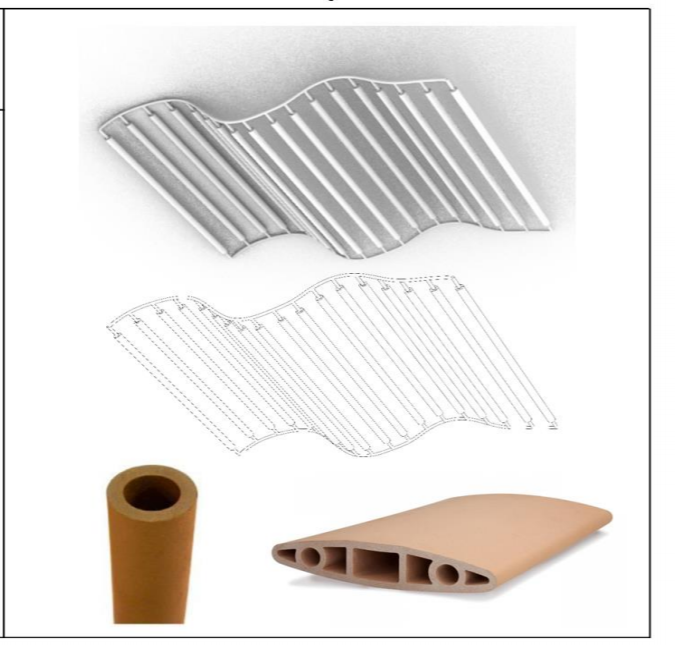
Challenge: One of the critical challenges for the project is the production of cold water used to create an air-cooling cycle. This production must be done with natural mechanisms while minimizing the consumption of water and energy.
Tested solution: An overground-underground water cycle is created combining the centuries-old Arabic technique of the qanat, solar-energy for the elevation of water overground and the radiant dissipation with the sky to provoke evaporative cooling.
Novelty: While nocturnal dissipation has been tested in the past, downflow systems have not been investigated. Given the foreseeable increase in cooling power in the last operating mode, the objective sought in this study was to experimentally evaluate the night-time dissipation power of a downflow system and compare its cooling power with that of conventional in-pipe configurations.
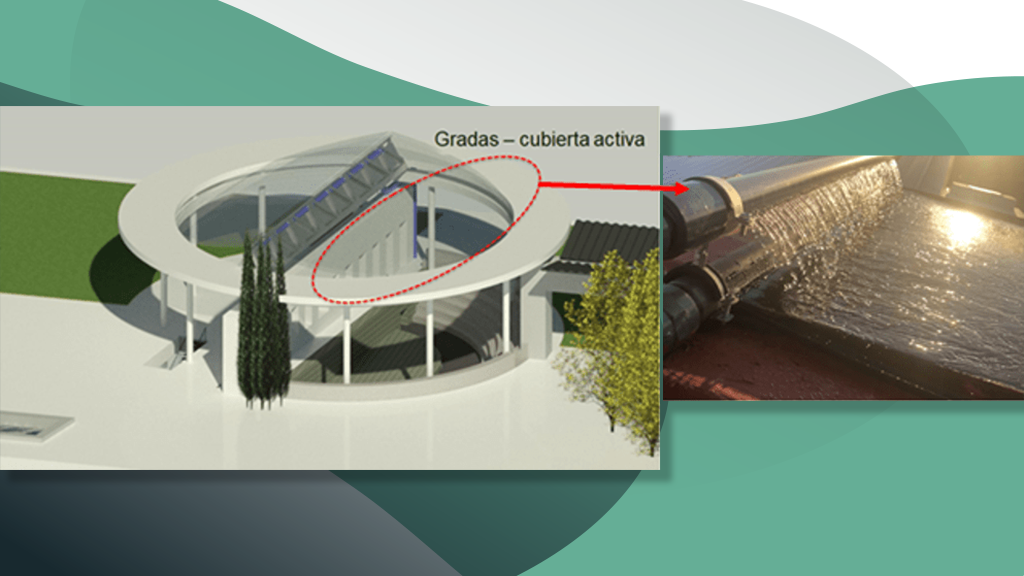
The image above shows details of the prototype built and tested at the facilities of the Higher Technical School of Engineers of the University of Seville. This solution allows the flow of water inside a polypropylene exchanger or outside as a falling sheet. The predictable improvement in cooling power in the downflow operating mode was experimentally compared with the conventional configuration. The comparison between the conventional operation (water circulating inside the tubes of the polypropylene collector) and the innovative operation (water circulating on the surface of the collector: descending sheet) showed that the powers achieved with this last option are of the order of three times than expected and referenced in the literature.
The UIA management innovation challenges
What to look for when replicating
CartujaQanat is a complicated urban innovation project which involves at least three central institutional stakeholders. The City of Sevilla, represented by the Mayor’s office, the Urbanism department and the Director of Social Innovation and Social Economy of the Seville City Council; EMASESA, the Metropolitan Water Company, represented by the senior Director of European & International programs as well as the managing authority of Cartuja also actively represented by a senior director of Engagement.
This structure as well as the high level of ambition set by the project signifies that success is directly dependent on access to senior management and political leadership levels as problem-solving guarantors. Guarantors relevant to questions of financial management, the potential need of legal rules interpretation as well as overall liaising of the project to the broader development agenda of Sevilla. All three aspects (financial, legal and strategic) are crucial both for the basic progress of the project as well as to ensure overall success, relevance within the city, and project viability.
The challenge of financial management is a central national administrative capacity question that merits direct attention. Why? For example, in the case of Spain, once any type of funds such as the UIA funding package, enters the municipal budget it is subjected to the same rules, restrictions and external audit as national funds. As a result, EU approved spending stemming from the program might not be approved by the regional auditor who holds the responsibility to approve spending based on national regulations. This issue becomes particularly contradictory in cases when we are looking at innovative actions. While the regulators themselves are held under strict legal and or regulatory standards often adopting the most narrow interpretation possible while urban innovation projects call for broader interpretations or even new regulations. This is a common problem across several EU member states which can hinder progress and innovation necessary to address the contemporary challenges articulated in the Urban Agenda.
What is important to maintain: While the city decided to follow a standard procurement path by tendering for materials and not for a service, this path demanded instead a high level of sophistication in the writing of the actual technical procurement report. The report itself has been not only a key project delivery instrument, but also a negotiation instrument between the project delivery partners striking a necessary compromise between time, cost and innovation.
In other words, to ensure that the project will actually be delivered successfully as a demonstration public space adhering to the zero-energy consumption target under extreme-heat conditions, the procurement technical report became subject of negotiation relative to the types of materials that will be used and the designs that will be applied. In addition, the technical specifications that will define the new materials that have been developed throughout the project as well as the areas where such materials will be used also had to be reflected at the procurement technical tender.
The successful development of the tender document was directly liaised to the
- successful construction and development of the pilot area
- successful deployment of the novel materials that have been developed
- scalability and replication potential of the project itself
Last but not least as a result of the ‘negotiations’ around the development of the procurement text the project delivery partners evolved their approach relative to the construction area, developing an additional ‘pilot island’ that will be used as a demonstration and test space for new materials. This is a very important factor of success to consider showing the importance of flexibility as a variable of management for the success of urban innovation projects while it adds value to the outputs of the project for the city of Sevilla as a solution overcoming the problem of time/cost/innovation complex. The new ‘pilot island’ will be functioning as a permanent test-bed for the testing and demonstration of solutions related to water management and urban heat beyond the limits of the project duration.
Effective management of multi-stakeholder and multi-sectorial programs principally demands flexibility, agility and calls for a departure in rigid hierarchical management structures towards a more networked governance model as an organisational arrangements within the public authority. CartujaQanat is no exception to this rule.
Sevilla has high maturity and prior experience in the management of such projects and as such its management structure follows the above principles resulting in an effective operation with high problem-solving and crisis-management qualities. It can be described as a concentric cycles structure with the core management team at the centre with the flexibility to expand or overlap to include representatives of other departments and/or other relevant actors at various points over the project time-frame. This management flexibility is a defacto horizontal collaboration model, essential to the project success, and should not be confused with the project management structures such as the project steering committee that is mostly relevant to internal decision-making and substantial internal problem and conflict solving.
The effect of COVID-19 and long distance collaboration:
It is interesting to note that while technology was key at facilitating communication under the extenuating circumstances of the COVID-19 pandemic it impeded collaboration and was an impediment in effective consensus building. Once the initial restrictions were lifted in Spain and the team met in person they were able to reach an agreement over a lingering issue pointing that in-person meetings are more constructive for conflict resolution and trust building.
Delivery Partners have a key role in the project's implementation and they share with the urban authorities risks and responsibilities. For Cartuja Qanat this is a crucial factor given that the success of all three dimensions of the project depends directly upon the willingness of the partners to deliver but even more so to engage and serve collaboratively the innovation mission.
What is important to maintain: This is a very successful project in terms of partnership composition as each delivery partner has high expertise in their respective field and combined are able to address all innovation challenges of the project (technical experimentation of new construction materials and designs for temperature management, re-invention of a traditional market such as the ceramics industry, space management and business development, water management and policy development). This clear division of expertise combined with efficient management and coordination are success guarantors.
Solving potential conflicts and innovation:
Based on the experience of the CartujaQanat partnership potential conflicts can be solved on the basis of three investment principles. Commitment to innovation is translated in additional time commitment from the partners. The time-factor is thus critical as innovation might require a departure from standard practices. Conflict resolution is translated in targeted coordination and a dedicated management team by the managing entity. The application of innovative solutions requires political support and senior stakeholder engagement.
For CartujaQanat success will be measured against different parameters linked to the three different program axes. These will include but are not limited to:
- New materials developed and extent of penetration in the market.
- Successful temperature lowering and creation of an ambient atmosphere in conditions of extreme heat
- Number of new visitors in the area and/or number of new events
- Successful management of the space (which can be translated to variables such as costs, energy production/consumption, number of citizens of entities involved in the management of the space, security and others
What is important to maintain: Monitoring and evaluation in such an innovation project will be liaised to the desired outcomes and not the outputs. What we will be trying to test is how far the needle has been moved and what is the impact of this intervention.
Beneficiaries, target groups, end users and more generally citizens are key actors for the success of the project not only because the goal is to transform and revitalise a public space as a place of recreation and business even in extreme heat conditions. They are critical actors for success, also due to the goal of looking to pioneer new management approaches for such public spaces that can render them economically and socially viable. Challenges and opportunities?
- In 2020 we experienced the extreme condition of managing a global pandemic. These extenuating circumstances were not necessarily favourable to communication especially during the initial months.
- Targeted engagement with local businesses is necessary but following a number of deliberations with low participation numbers it was decided to review the engagement strategy following the reconstruction of the space itself.
- The key stakeholders currently involved in the pilot area are currently in coordination in order to identify the most appropriate governance model that will serve the goals set at the outset. This has been considered an additional key step prior to expanding to the broader community.
- A concentrate communications campaign will be a next step in order to gradually elevate citizens’ interest.
- On the contrary, targeting the key community of the ceramics industry which is relevant to the socio-economic targets of the project towards re-inventing ceramics as a cooling-down material was easier. The project was as such presented to the National Congress of Ceramics Industry organised in December 2020. This has been a good timing as the project is advancing in its technical experimentation stage for the usages of ceramics and concrete.
The entire UIA project of CartujaQanat is deeply entwined to the city’s strategic goals for 2030 as well as operationally linked to EMASESA’s role as a driver of urban change in the metropolitan area of Sevilla. As such, various elements of the project are already upscaling. What are these elements and how are they expected to trickle through beyond CartujaQanat?
- Re-invention of a traditional market such as the ceramics industry and identification of novel ceramic products. While still in experimentation stage, Innovarcilla, has already started a communication process with key industry stakeholders to inform of the process goals and expected outputs.
- Space usage and business development. COVID-19 restrictions have prevented a successful outreach to businesses that may be involved as users and stakeholders in the new space. However an organised stakeholder mapping and plans to develop a community of actors are expected to pave the way towards successful space usage and adoption of the model in other large public spaces.
- International collaborations and comparative learning for public space management. This is a key step expected to take place in the upcoming months relative to approaches in the management of large public spaces. Given that this dimension of the project is ongoing any potential scale-up will be relative to the results of the pilot stage.
- Novel construction materials and designs for temperature management in various spaces. A number of technical outputs of the project are expected to feed into the design of larger and smaller street interventions towards improving ambiance under heat conditions. Design innovations including the application of the qanat technique and the water cooling mechanisms may be applicable at street level as well as smaller spaces such as bus stops, public squares and other open or closed spaces. The ‘test area’ that is now foreseen as part of the CartujaQanat reconstruction area will also contribute as a data-generation space for new techniques and materials.
Concluding remarks and innovations summary
How is CartujaQanat moving the needle in the urban climate transformation fight?
Sevilla will be the battleground of Europe for extreme urban heat. As the warmest city in continental Europe (annual average temperature) Sevilla will be dealing over the next five to ten years with longer periods of heatwaves, and extreme temperatures. Untreated such climatic phenomena will have multi-faceted consequences in the urban life from energy consumption, to tourism to public health and street-life.
The City of Sevilla is thus paving the way with a number of strategic programs that are expected to transform the city and increase its urban resilience across all four key access of health, economy, society and urban infrastructure.
The UIA project CartujaQanat, is a cornerstone of these interventions embedded withing the Sevilla 2030 Strategy. In its second year of implementation is already giving some key innovations both as a capacity-building program and through its outputs.
Management innovations
Innovative Outputs
Procurement text is a key management output and a result of compromise between new technical designs and partners.
The comparison between conventional operation of water circulating inside the tubes of a polypropylene collector)and the innovative operation (tested in the context of the project) of water circulating on the surface of a collector: descending sheet, showed that the powers achieved with this last option are of the order of three times than expected and referenced in the literature.
The project is adjusted to respond to the ongoing demands of technical research for urban heat interventions. A ‘pilot island’ is now included as a permanent city investment to allow for experimentation and testing beyond the life-cycle of the project itself.
New or novel applications for materials such as cement and ceramics as surface cooling down agents. New evaporative surface with slipcasting elements are created and tested that can roll-out to the market for usage in public or private spaces.
New processes for innovative public space management are explored in a collaborative manner between the project partners. In practice this means that the time factor becomes a critical variable of success.
Initial results are delivering towards the zero-net energy goal for open space cooling through a combination of water, construction material and design (green/blue/grey infrastructure)
Ultimately the new space that will be constructed will function as a demonstration not only for the potential in material and urban construction as agents for cooling down temperatures. It will equally operate as an accelerator for green jobs transformation in the construction industry and public space operation and livability as a policy option for the use and revival of large public spaces.
How is CartujaQanat moving the needle in the urban climate transformation fight?
Sevilla will be the battleground of Europe for extreme urban heat. As the warmest city in continental Europe (annual average temperature) Sevilla will be dealing over the next five to ten years with longer periods of heatwaves, and extreme temperatures. Untreated such climatic phenomena will have multi-faceted consequences in the urban life from energy consumption, to tourism to public health and street-life.
The City of Sevilla is thus paving the way with a number of strategic programs that are expected to transform the city and increase its urban resilience across all four key access of health, economy, society and urban infrastructure.
The UIA project CartujaQanat, is a cornerstone of these interventions embedded withing the Sevilla 2030 Strategy. In its second year of implementation is already giving some key innovations both as a capacity-building program and through its outputs.
|
Management innovations |
Innovative Outputs |
|---|---|
|
Procurement text is a key management output and a result of compromise between new technical designs and partners. |
The comparison between conventional operation of water circulating inside the tubes of a polypropylene collector)and the innovative operation (tested in the context of the project) of water circulating on the surface of a collector: descending sheet, showed that the powers achieved with this last option are of the order of three times than expected and referenced in the literature. |
|
The project is adjusted to respond to the ongoing demands of technical research for urban heat interventions. A ‘pilot island’ is now included as a permanent city investment to allow for experimentation and testing beyond the life-cycle of the project itself. |
New or novel applications for materials such as cement and ceramics as surface cooling down agents. New evaporative surface with slipcasting elements are created and tested that can roll-out to the market for usage in public or private spaces. |
|
New processes for innovative public space management are explored in a collaborative manner between the project partners. In practice this means that the time factor becomes a critical variable of success. |
Initial results are delivering towards the zero-net energy goal for open space cooling through a combination of water, construction material and design (green/blue/grey infrastructure) |
Ultimately the new space that will be constructed will function as a demonstration not only for the potential in material and urban construction as agents for cooling down temperatures. It will equally operate as an accelerator for green jobs transformation in the construction industry and public space operation and livability as a policy option for the use and revival of large public spaces.
About this resource
The Urban Innovative Actions (UIA) is a European Union initiative that provided funding to urban areas across Europe to test new and unproven solutions to urban challenges. The initiative had a total ERDF budget of €372 million for 2014-2020.
Similar content




